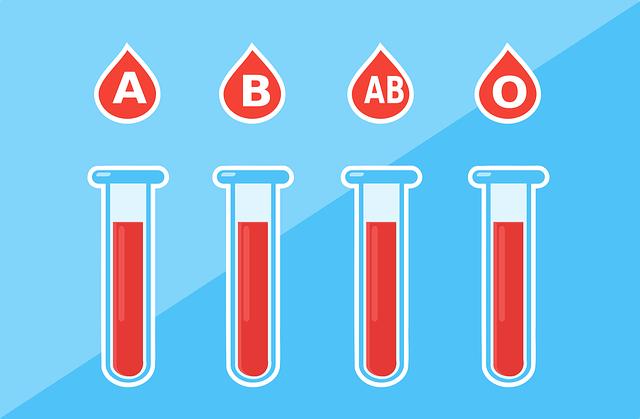
Anemia is a common blood disorder that affects millions of people worldwide. It occurs when the body doesn’t have enough red blood cells or when the red blood cells don’t function properly. Red blood cells carry oxygen from the lungs to the rest of the body, so a lack of red blood cells can lead to fatigue, weakness, and other health problems. Anemia can be caused by a variety of factors, including nutritional deficiencies, chronic diseases, and genetic conditions. Understanding the different types of anemia is important for proper diagnosis and treatment. In this comprehensive guide, we will explore the different types of anemia and their causes, symptoms, and treatment options.
Iron-Deficiency Anemia
Iron-deficiency anemia is the most common type of anemia, affecting millions of people worldwide. It occurs when the body doesn’t have enough iron to produce hemoglobin, the protein in red blood cells that carries oxygen. Iron-deficiency anemia can be caused by a lack of iron in the diet, poor absorption of iron from the gut, or excessive loss of iron through bleeding. Symptoms of iron-deficiency anemia include fatigue, weakness, pale skin, shortness of breath, and headaches. Treatment involves iron supplementation and identifying and treating the underlying cause of the iron deficiency.
Vitamin-Deficiency Anemia
Vitamin-deficiency anemia can occur when the body doesn’t have enough of certain vitamins, such as vitamin B12 or folate, to produce red blood cells. Vitamin B12 is necessary for the production of red blood cells and the maintenance of a healthy nervous system, while folate (or folic acid) is essential for red blood cell production and the prevention of birth defects. Vitamin-deficiency anemia can be caused by poor diet, malabsorption of vitamins from the gut, or certain medical conditions that impair the body’s ability to utilize these vitamins. Symptoms of vitamin-deficiency anemia include fatigue, weakness, shortness of breath, and pale skin. Treatment involves supplementation of the deficient vitamin and addressing the underlying cause of the deficiency.
Anemia of Chronic Disease
Anemia of chronic disease is a type of anemia that occurs in people with chronic conditions such as cancer, kidney disease, or rheumatoid arthritis. In these conditions, the body’s immune system produces proteins called cytokines, which can interfere with the production and function of red blood cells. As a result, the body may not produce enough red blood cells, or the red blood cells may not function properly. Symptoms of anemia of chronic disease include fatigue, weakness, and shortness of breath. Treatment involves managing the underlying chronic condition and, in some cases, using medications to stimulate red blood cell production.
Sickle Cell Anemia
Sickle cell anemia is a genetic disorder that affects the shape of red blood cells. In people with sickle cell anemia, the red blood cells are abnormally shaped and can become stuck in blood vessels, leading to pain, organ damage, and other complications. Sickle cell anemia is caused by a mutation in the gene that makes hemoglobin, the protein in red blood cells that carries oxygen. Symptoms of sickle cell anemia include pain, fatigue, jaundice, and frequent infections. Treatment involves managing the symptoms of the disease and preventing complications such as infections and organ damage.
Thalassemia
Thalassemia is a genetic disorder that affects the production of hemoglobin. People with thalassemia produce less hemoglobin than normal, leading to anemia and other health problems. Thalassemia is caused by mutations in the genes that make hemoglobin. There are two main types of thalassemia: alpha thalassemia and beta thalassemia, each with different subtypes. Symptoms of thalassemia can vary depending on the type and severity of the condition but may include fatigue, weakness, pale skin, and growth and development problems in children. Treatment involves blood transfusions, iron chelation therapy, and, in some cases, bone marrow transplantation.
Aplastic Anemia
Aplastic anemia is a rare but serious type of anemia that occurs when the bone marrow doesn’t produce enough red blood cells, white blood cells, and platelets. Aplastic anemia can be caused by an autoimmune reaction in which the body’s immune system attacks the bone marrow, exposure to toxic chemicals or radiation, certain infections, or inherited conditions. Symptoms of aplastic anemia include fatigue, weakness, frequent infections, and easy bruising and bleeding. Treatment may involve blood transfusions, medications to suppress the immune system, and, in some cases, bone marrow transplantation.
Diagnosing and Treating Anemia
Diagnosing anemia typically involves a physical exam, a review of symptoms, and a blood test to measure the levels of hemoglobin and other blood components. Depending on the suspected cause of anemia, additional tests such as bone marrow biopsy, genetic testing, or imaging studies may be needed. Treatment for anemia varies depending on the type and severity of the condition but may include dietary changes, vitamin and mineral supplementation, blood transfusions, medications, and, in some cases, bone marrow transplantation. It’s important to work with a healthcare provider to identify the underlying cause of anemia and develop a personalized treatment plan.
In conclusion, anemia is a common blood disorder that can have a significant impact on a person’s health and quality of life. Understanding the different types of anemia, their causes, symptoms, and treatment options is important for proper diagnosis and management. By recognizing the signs and symptoms of anemia and seeking prompt medical attention, individuals can receive the care and treatment they need to effectively manage their condition and improve their overall health and well-being.












